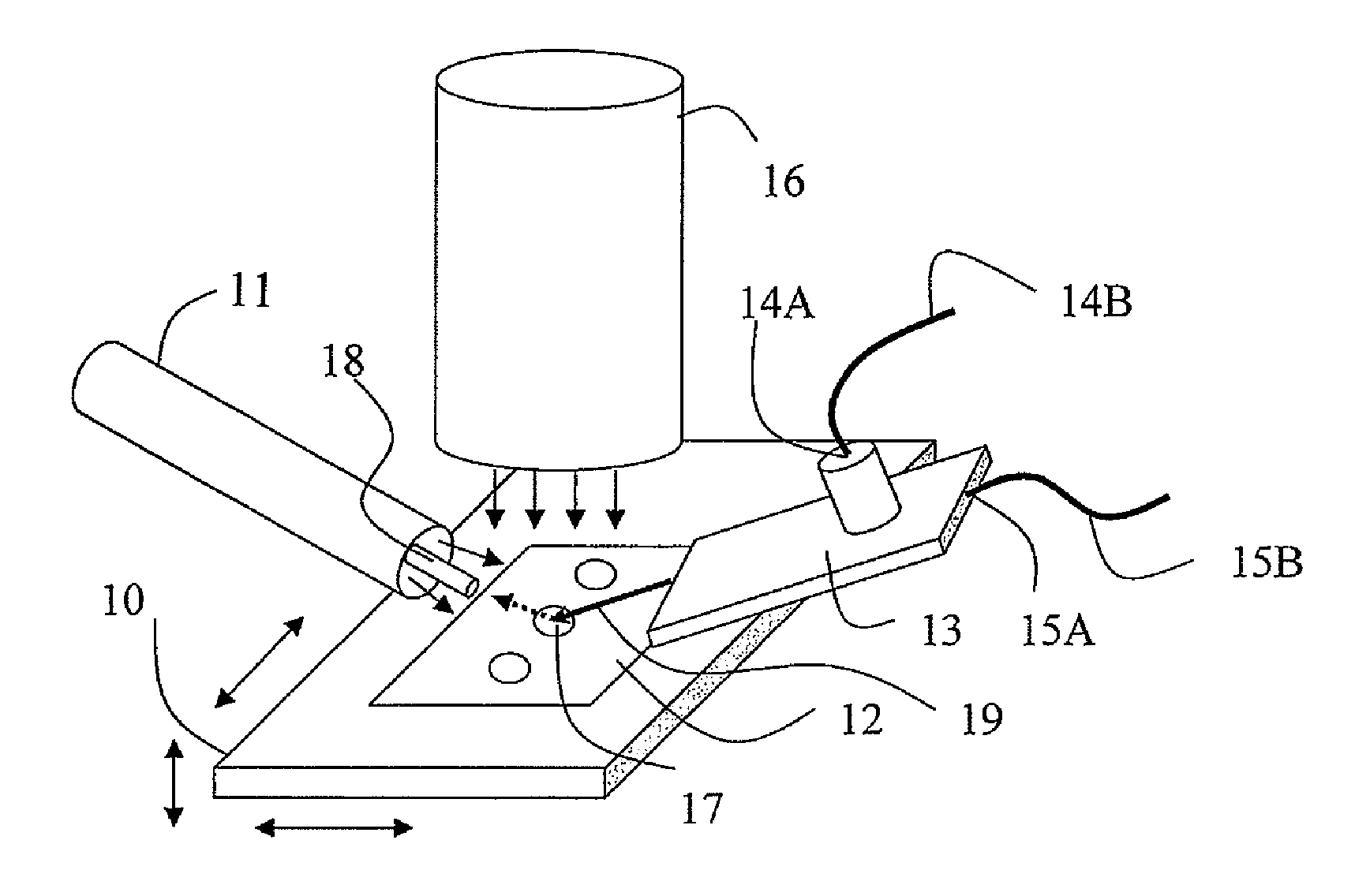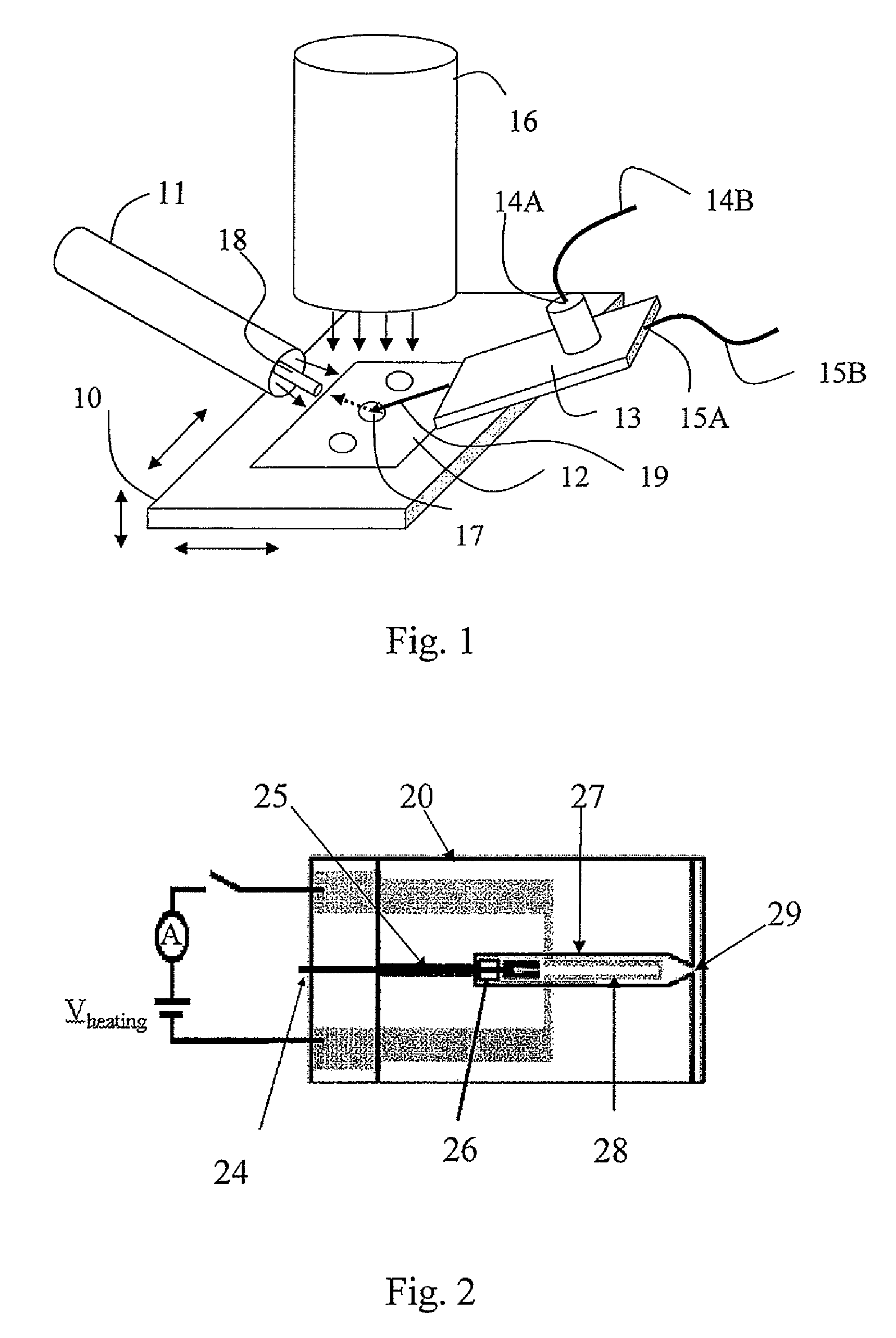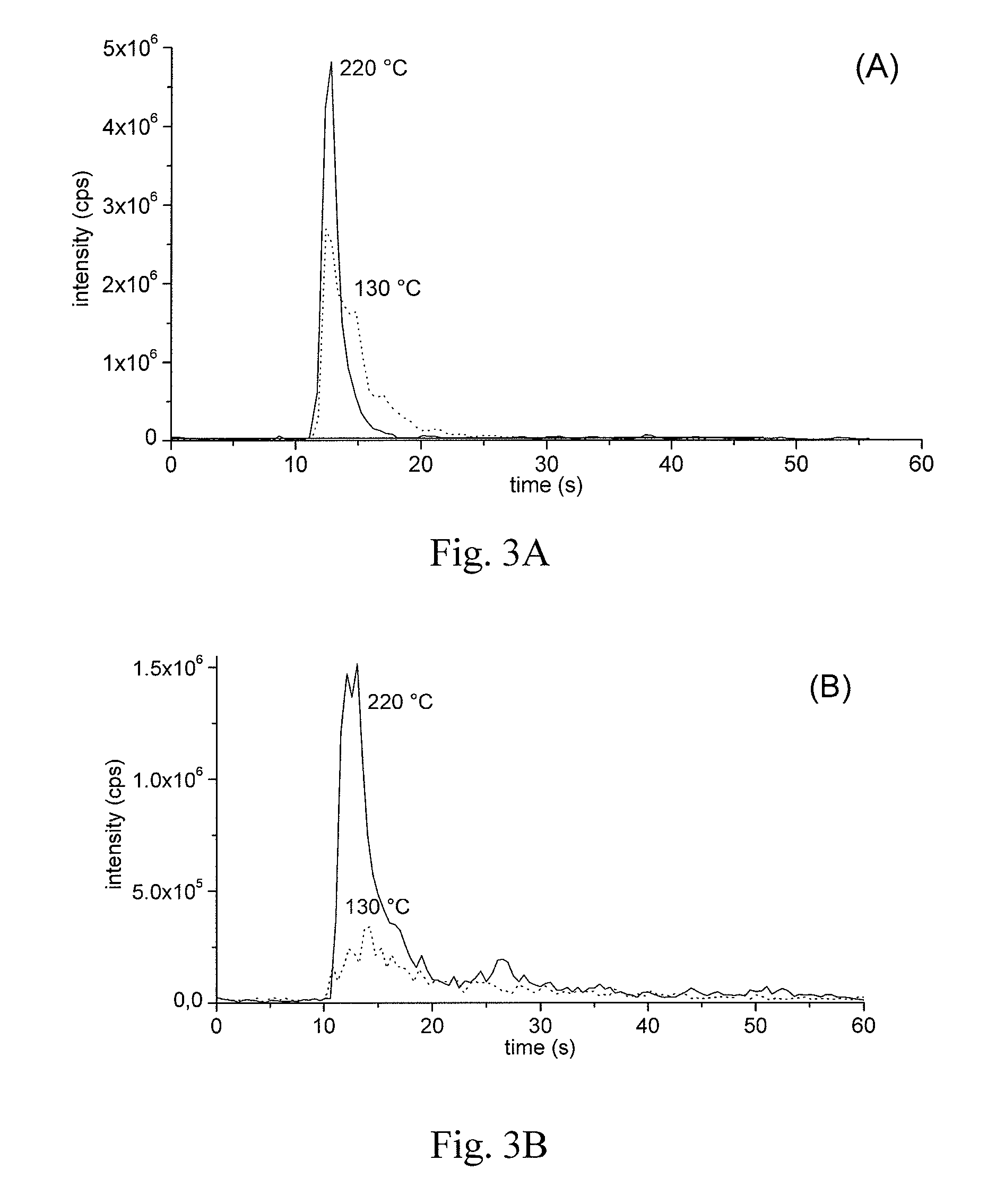Method and system for desorbing and ionizing chemical compounds from surfaces
a technology of chemical compounds and surfaces, applied in the field of desor, can solve the problems of reducing the efficiency or not at all affecting the efficiency of ionization of compounds from artificial and native surfaces, and reducing the efficiency of ionization of neutral and nonpolar analytes, etc., and achieve the effect of efficient production of ions
- Summary
- Abstract
- Description
- Claims
- Application Information
AI Technical Summary
Benefits of technology
Problems solved by technology
Method used
Image
Examples
Embodiment Construction
[0047]With reference to FIG. 1, the present system according to one embodiment comprises a nebulizer 13 for desorbing analyte particles from a desorption area 17 of the substrate. An UV light source 16 is adapted above the desorption area 17 for directing to the desorption area light capable of ionizing analyte particles.
[0048]The nebulizer 13, shown in more detail in FIG. 2, comprises an inlet 15A, 24 for a liquid solvent and an inlet 14A, 26 for nebulizer gas. The solvent and nebulizer gas inlet conduits are denoted with reference numerals 15B and 14B, respectively, in FIG. 1. In the nebulizer 13, 20, the solvent is vaporized. The solvent is introduced in the channel for solvent introduction 25. The nebulizer gas and the solvent are mixed in mixing zone before or after vaporization of the solvent in order to form desorption gas. The nebulizer 13, 20 further comprises a heater 28 for heating the desorption gas to a temperature above the vaporization temperature of the solvent. The ...
PUM
 Login to View More
Login to View More Abstract
Description
Claims
Application Information
 Login to View More
Login to View More - R&D
- Intellectual Property
- Life Sciences
- Materials
- Tech Scout
- Unparalleled Data Quality
- Higher Quality Content
- 60% Fewer Hallucinations
Browse by: Latest US Patents, China's latest patents, Technical Efficacy Thesaurus, Application Domain, Technology Topic, Popular Technical Reports.
© 2025 PatSnap. All rights reserved.Legal|Privacy policy|Modern Slavery Act Transparency Statement|Sitemap|About US| Contact US: help@patsnap.com



